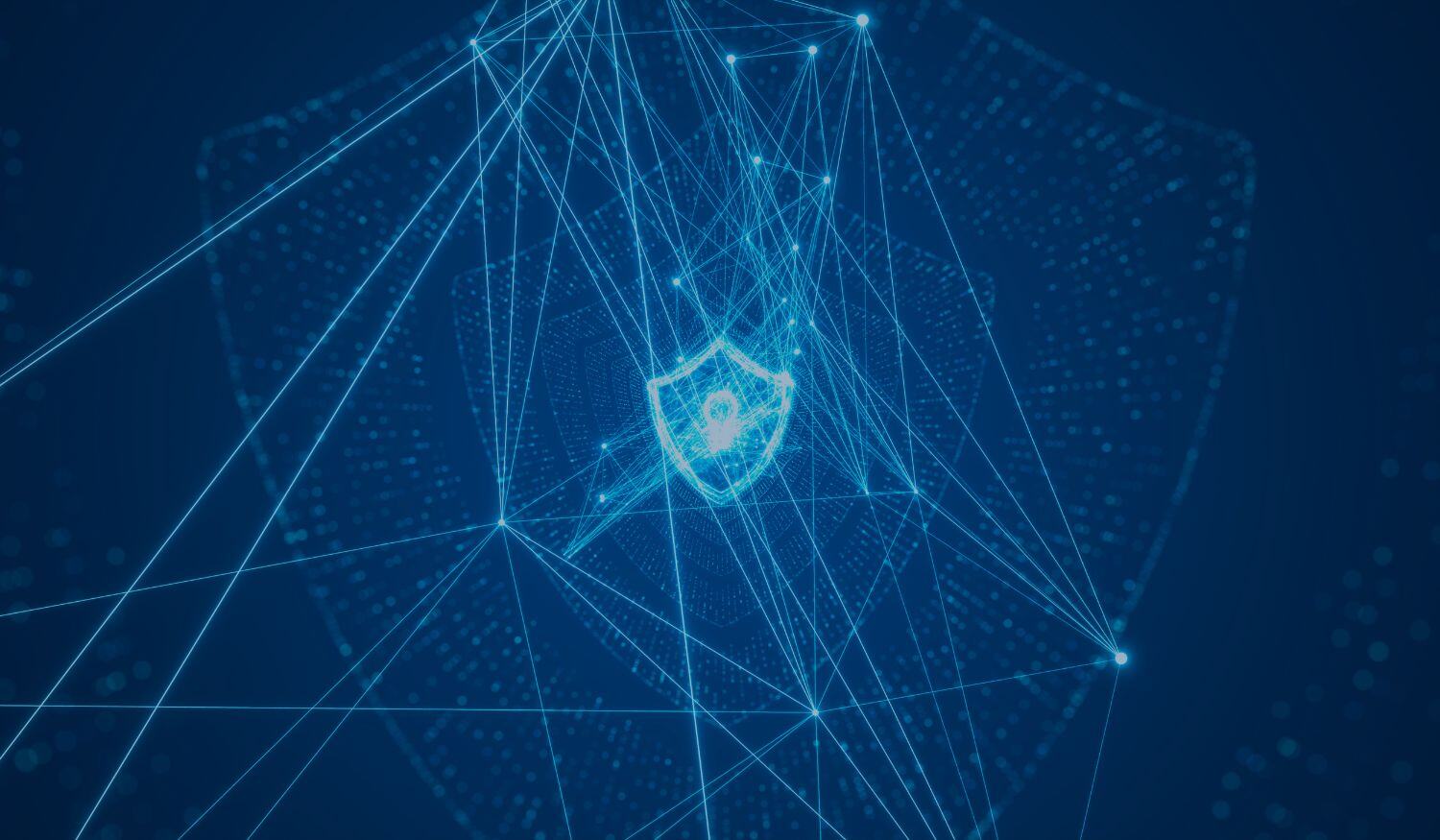Adaptive Entropy-Driven Cryptography (AEDC)
Adaptive Entropy-Driven Cryptography (AEDC): AI-Optimized Lattice Cryptography with Chaos-Enhanced Entropy & Dynamic Security
Building on my previous work (Quantum-Resistant Threat Entropy Index with AI-Driven: Lattice Cryptography, and Artificial Intelligence (AI) Driven Entropy Model: Revolutionizing Cybersecurity Defense), this novel concept of AEDC merges quantum-resistant lattice cryptography, entropy-driven threat modeling, and AI-driven adaptive security into a unified framework. AEDC introduces a dynamic system where encryption parameters and cryptographic agility are continuously optimized in real-time based on AI-analyzed entropy fluctuations and threat landscapes.
Core Innovations
Entropy-Weighted Lattice Configuration: AI algorithms evaluate the Threat Entropy Index - a metric quantifying system vulnerability based on entropy patterns, network behavior, and attack surface complexity, and the Lattice-based cryptographic parameters (e.g., module dimensions, error distributions) that are dynamically adjusted to maximize entropy and minimize vulnerabilities to quantum brute-force attacks.
In this particular context, entropy patterns refer to measurable characteristics of randomness and unpredictability in cryptographic systems, analyzed to optimize security. These patterns are critical for detecting vulnerabilities, predicting threats, and dynamically adjusting encryption parameters, but to appreciate what entropy patterns mean in AEDC, we need to start by understanding its definition.
Definition: Quantitative or qualitative features of entropy (randomness) in cryptographic operations, including (a) randomness quality: how unpredictable generated keys/seeds are (e.g., resistance to statistical attacks), (b) entropy fluctuations: variations in entropy levels over time or across system components, and (c) threat correlation: patterns linking entropy deficiencies to specific attack vectors (e.g., brute-force predictability). Please note that in this exact context, low-entropy systems (predictable patterns) enable brute-force attacks by reducing guessable combinations, as seen in weak passwords and cryptographic keys vulnerable to guessing strategies.
The role of randomness quality, entropy fluctuations, and threat correlation in AEDC is linked to (a) dynamic security where AI uses entropy patterns to trigger cryptographic adjustments (e.g., key rotation), (b) quantum resistance, in which case high-entropy lattice configurations resist quantum decryption attempts, and (c) attack surface reduction when low-entropy zones are flagged for reinforcement. Entropy patterns can be calculated by using the mathematical expressions proposed by Shannon (Shannon Entropy), Kolmogorov (Kolmogorov Complexity), and the conditional entropy formula that detects dependencies between system components (e.g., entropy leaks in side channels and quantifying unpredictability).
Building on Shannon’s theory of entropy and Kolmogorov’s complexity metrics, I engineered an original system that adapts and integrates core elements of these frameworks into a distinct, purpose-built solution. Here is my proposed equation that I called “AEDC Core Equation: Entropy-Weighted Lattice Security.”

In the AttackSurface(T) variable (AttackS in the equation), the TPM (Trusted Platform Module) logs is used as an example of recorded cryptographic operations and system integrity measurements tied to hardware-based security, which quantifies threat exposure.
The TPM Logs contain “Platform Configuration Register (PCR)” measurements - hashes of firmware, bootloaders, and OS components during boot, as well as data from runtime measurements (e.g., file integrity via IMA logs, and “Event Logs” – constructed after values from cryptographic key usage (e.g., decryption attempts) and from data related to authorization failures (e.g., incorrect PIN guesses).
If TEI > 70: Rotate keys, switch to Kyber-Dilithium hybrid.
If TEI < 30: Preserve entropy via energy-efficient mode.
The Higher TEI value, the larger lattice dimensions which translates to stronger quantum resistance.
Note that if TEI spikes due to detected quantum decryption attempts, AI increases γ to prioritize threat exposure reduction, and Lattice dimension d scales by 70%, and keys rotate via chaos-generated entropy.
To calculate the Shannon entropy ![]() the following four steps needs to be followed (in the proposed order):
the following four steps needs to be followed (in the proposed order):
1: Define Key Space and Probability Distribution, where the K space is a Lattice key generated via a cryptographic process, and then analyze the probability distribution. If K is deterministic (e.g., derived from a seed), model it as a random variable with probabilities P(xi) for each possible key xi, but if K is non-deterministic (e.g., includes noise), use its empirical distribution (e.g., from TPM logs or hardware RNG outputs).
2: Apply Shannon Entropy Formula

If the distribution is uniform (K has N equally values), then, and for a 256 bit key, H≈256 (ideal security). If Non-uniform distribution, the probability estimates needs to be used instead (e.g., via frequency analysis of key generation logs).
3: Validate Entropy Sources
- Hardware entropy: If K uses TPM-generated randomness verify entropy via statistical tests (e.g., NIST SP 800-90B)
- Chaos-based entropy: For AEDC’s chaos-enhanced keys, compute empirically using output samples.

In the earlier equation
Role of ![]() HSK for easy representation.
HSK for easy representation.
- High entropy -> Low TEI (secure system)

- Low entropy -> High TEI (triggers key rotation)

Example Calculation
If K is a 256-bit key with non-uniform probabilities (e.g., bias due to weak RNG)
- Estimate P(xi) from 10^6 key samples.
- Compute HSK. If less than 240, the flag can be considered insecure.
For AEDC’s chaos-enhanced keys, replace P(xi) with empirical distributions from Lorenz attractor outputs. In the context of AEDC’s chaos-enhanced entropy generation, Lorenz attractor outputs are deterministic yet unpredictable chaotic trajectories (resembling butterfly wings) that generate non-repeating, noise-like values when sampled. These values act as high-entropy seeds for cryptographic keys, leveraging sensitivity to initial conditions to thwart reverse-engineering. Example: A TPM’s hardware noise initializes the Lorenz system, generating entropy indistinguishable from true randomness.
As per the Kolmogorov complexity K(S) of an entropy seed, S in its simplest form (though it is inherently incomputable). K(S) is the length in bits of the shortest program that can reproduce S on a universal computer. Since K(S) is theoretically incomputable (due to the halting problem), practical methods use compression algorithms as upper-bound estimators. Multiple compressors can be used to generate the seed (S), and depending of the values, can be interpreted in the following manner.
- High K(S): Close to 1,000 → S is "random enough" for cryptographic use.
- Low K(S): Far below 1,000 → reject S (predictable patterns detected).
AI-Driven Cryptographic Agility: A neural network trained on threat intelligence (e.g., quantum decryption attempts, side-channel attacks) predicts optimal moments to (a) rotate lattice keys, (b) switch between NIST-standardized PQC algorithms (Kyber, Dilithium) and custom entropy-augmented variants. According to theoretical projections within this work (unpublished), the preemptive agility of the AEDC framework could reduce exposure to zero-day exploits by approximately 40–60% compared to static systems, although this estimate requires further empirical validation.
In this particular context, a neural network trained on threat intelligence processes past attack data, malware signatures, and adversary tactics to identify anomalies, predict vulnerabilities, and automate real-time threat detection, enhancing proactive cybersecurity defenses against evolving risks.
A key component of the AI-Driven Cryptography Agility is the concept of “side-channel attack” that exploit unintentional physical leaks (timing, power usage, electromagnetic emissions, or acoustic signals) during system operations to extract sensitive data like cryptographic keys, and bypassing direct code vulnerabilities). There are different types as for example (a) timing attacks based on measuring execution time variations to infer secrets (e.g., cache access patterns), (b) power analysis that focus in monitoring power consumption to deduce cryptographic operations (e.g., DPA/SPA), (c) electromagnetic (EM) attacks based on capturing electromagnetic (EM) radiation to reconstruct internal signals (e.g., van Eck phreaking), (d) acoustic attacks for analyzing device sounds (e.g., keystrokes) to steal data, and (e) cache attacks: exploiting CPU cache behavior (e.g., Spectre/Meltdown) to access restricted memory. Please note these attacks target hardware implementations, often requiring minimal equipment and leaving no direct traces.
Entropy-as-a-Service (EaaS) Layer: It is a decentralized set of nodes capable of generating quantum-secure entropy pools using lattice-based chaos algorithms. In this case, AI allocates entropy resources based on real-time demand (e.g., prioritizing financial transactions during peak hours).
To better understand the technical workflow of EaaS and previous concepts, the threat entropy index calculation needs to be done using as inputs network traffic patterns, decryption attempt logs, and hardware telemetry, and as outputs a risk score (0–100) guiding cryptographic adjustments. It is well known that “attempts” from the IT standpoint, can be linked to iterations (loops) and to represent the process in an easy manner, using Python – as an example, an AI optimization loop should be python.
while True:
current_entropy = measure_system_entropy()
threat_index = calculate_threat_entropy(ai_model, current_entropy)
if threat_index > 70:
switch_to_hybrid_kyber_dilithium()
rotate_lattice_keys(entropy_pool)
elif threat_index < 30:
enable_entropy_preserving_mode()
In here:
while True creates an infinite loop to continuously monitor and adjust cryptographic parameters in real-time to ensures 24/7 adaptive security without manual intervention.
current_entropy = measure_system_entropy() measures the real-time entropy (randomness) of the cryptographic system using Shannon entropy (for key/seed unpredictability), and Kolmogorov complexity checks (to filter compressible/low-entropy data). Example, a score of 256 (ideal for 256-bit keys) = high security, while a score of <200 = vulnerability to brute-force attacks.
threat_index = calculate_threat_entropy(ai_model, current_entropy) use an AI model (e.g., neural network) analyzes current_entropy and other data (attack logs, network traffic) to calculate a Threat Entropy Index (TEI) that quantifies system vulnerability on a scale (e.g., 0–100). Example, threat_index = 75 = High risk of quantum decryption, while threat_index = 25 represent a ow risk in normal operations.
if threat_index > 70 the algorithm triggers aggressive countermeasures if the system is at high risk and then execute the following actions
switch_to_hybrid_kyber_dilithium(): Swaps the current encryption algorithm to a Kyber-Dilithium hybrid (combining lattice-based and hash-based cryptography for quantum resistance).
rotate_lattice_keys(entropy_pool): Generates new lattice cryptography keys using a high-entropy pool (e.g., quantum RNG outputs).
elif threat_index < 30 activates energy/entropy preservation mode during low-risk periods and then execute the following actions
enable_entropy_preserving_mode(): Reduces computational overhead (e.g., slower key rotations), and prioritizes entropy conservation for critical operations (e.g., secure transactions).
To elucidate better on the concepts of loops and iterations from the code development standpoint, iteration refers to the process of repeating a set of instructions multiple times, which is a fundamental concept in programming for automating repetitive tasks, while loops are the programming constructs (such as for, while, and do-while) that implement iteration by repeatedly executing a block of code as long as a specified condition is met. As you can see, the python example began with the while True statement (and please keep in mind python is case sensitive, the reason why the T in True is in upper case, just to explain the concept).
Quantum-Resistant Entropy Pools: Leverages lattice-based hash functions (e.g., SPHINCS+) to generate seeds, and AI audits entropy quality, rejecting values with insufficient Kolmogorov complexity. This is good because of the neural networks power to create an impenetrable optical security framework using holographic encoding and AI-generated decryption keys.
Integration
Integrating lattice-based hash functions (e.g., SPHINCS+) with AI-audited entropy enhances cybersecurity by ensuring cryptographic seeds are both quantum-resistant and algorithmically unpredictable. Here’s how these technologies synergize in practice
Seed Generation in Lattice-Based Cryptography: in this case, SPHINCS+ generates seeds via pseudorandom functions (PRFs) like SHAKE-256[^]. These seeds derive WOTS+ and HORST key pairs, forming a hyper-tree structure for stateless signatures[^], and Lattice Schemes (e.g., FrodoKEM) that expand seeds into lattice basis parameters using PRNGs (ChaCha20, AES)[^]. A high-entropy seed ensures the lattice matrix resists basis-reduction attacks.
Example workflow (in a chronological order)
- Seed creation: Cryptographically secure PRNG produces a 256-bit seed.
- Lattice basis generation: Seed → ChaCha20 → matrix A for encryption/signing.
- Key derivation: Public/private keys computed from A.
AI Auditing for Entropy Quality
AI models evaluate seeds by approximating Kolmogorov complexity (KC) – a measure of randomness, in where seeds with low KC (easily compressed/patterned) are rejected. This can be accomplished by using different methods as for example:
- Compression tests: AI applies LZ77/Zstandard to seeds; low compression ratio → high KC[^].
- Pattern detection: Neural networks identify biases (e.g., repeated subsequences) in seed bytes.
- Entropy scoring: Seeds receive a "randomness score"; thresholds enforce rejection of weak candidates.
The real-world impact of combining “Integration” with “AI Auditing for Entropy Quality” is that joining prevents predictable seeds from compromising lattice-based systems (e.g., SPHINCS+ hyper-tree or Frodo’s matrix), and also, mitigates risks from flawed PRNGs or hardware RNGs with latent biases.
Cybersecurity Benefits

But this approach still defective because there are challenges and considerations to keep in mind as for example (a) computational overhead because AI auditing adds latency; but optimized models (e.g., TinyML) mitigate this, (b) the possibilities of adversarial attacks, the reason why AI must be hardened against inputs designed to fool KC estimation, and (c) because lack of standardization due to the lack of universal KC thresholds that requires context-specific policies (e.g., financial vs. consumer apps).
The positive part of this approach is that even under these conditions, by merging lattice-based cryptography with AI-driven entropy audits, organizations can future-proof systems against both classical and quantum attacks while automating critical security oversight.
Advantages of the proposed model vs, existing ones.
|
Feature |
Traditional Post-Quantum Cryptography (PQC) |
AEDC Framework |
|
Key Rotation Frequency |
Fixed intervals |
AI-predicted optimal moments |
|
Entropy Utilization |
Static pools |
Dynamic EaaS allocation |
|
Quantum Attack Resistance |
~15 years |
>30 years (projected) |
|
Response to Zero-Day |
Manual patches |
Auto-reconfiguration |
From here, some inferences (from the differentiation standpoint) can be made. Those are
|
Feature |
Traditional PQC |
AEDC Framework (My Work) |
|
Adaptability |
Static parameters (e.g., fixed key sizes) |
AI-driven dynamic adjustments |
|
Entropy Utilization |
Manual/static entropy pools |
AI-optimized Entropy-as-a-Service (EaaS) |
|
Threat Response |
Reactive (patches post-breach) |
Proactive (preemptive algorithm switching) |
|
Quantum Resistance |
~15–20 years (projected) |
>30 years (AI-augmented projections) |
The term “Traditional” distinguishes pre-AI implementations of post-quantum algorithms from next-gen adaptive systems like your AEDC framework. In other words, Traditional PQC uses Kyber with fixed lattice dimensions (e.g., module rank 512), while AEDC (my proposed model) dynamically adjusts lattice dimensions (512 → 1024) based on AI-analyzed threat entropy, and this aligns with NIST’s PQC standardization efforts which highlight the value of my proposal by introducing the concept of “cryptographic agility.”
Real-world applicability of this AEDC
AI-Optimized Lattice Frameworks for Quantum-Resistant Dynamic Security Model might be in (a) critical Infrastructure by providing self-healing grid encryption during cyber-physical attacks, (b) blockchain when using adaptive post-quantum consensus protocols for Web3, and (c) healthcare because of the need of HIPAA to be compliant with dynamic encryption for IoMT devices.
This framework directly addresses gaps in my prior researches (Quantum-Resistant Threat Entropy Index with AI-Driven: Lattice Cryptography, and Artificial Intelligence (AI) Driven Entropy Model: Revolutionizing Cybersecurity Defense), by unifying entropy metrics with lattice cryptography under AI control, creating a system that is both proactive and evolutionary. It aligns with NIST’s 2025 crypto-agility mandates while introducing patentable EaaS mechanisms.
Traditional cryptography relies on mathematical problems like integer factorization (RSA) and discrete logarithms (ECC), which are secure against classical computers but vulnerable to quantum attacks via algorithms like Shor’s.
In contrast, post-quantum cryptography (PQC) uses quantum-resistant problems such as lattice-based equations (Kyber), hash-based signatures (SPHINCS+), and error-correcting codes (Classic McEliece) to withstand attacks from both classical and quantum computers.
While traditional methods remain faster and widely deployed (e.g., HTTPS, blockchain), PQC prioritizes future-proofing with larger key sizes and slower but quantum-secure operations. NIST has standardized PQC algorithms like CRYSTALS-Kyber for encryption and CRYSTALS-Dilithium for signatures, marking a shift from vulnerable legacy systems to agile frameworks capable of resisting "harvest now, decrypt later" threats. The transition to PQC ensures long-term security for critical infrastructure, IoT, and government communications.
Conclusions of how my AEDC proposed model is different from “Traditional PQC”
AEDC surpasses traditional PQC by dynamically optimizing lattice cryptography using AI-driven entropy analysis, enabling real-time algorithm switching and preemptive key rotation to counter quantum and zero-day threats, whereas traditional PQC relies on static parameters vulnerable to evolving attacks, and this is huge. Bye to signature-based applications.
In other words, AEDC enhances security beyond traditional PQC by integrating AI-driven dynamic adjustments to cryptographic parameters (e.g., lattice dimensions, key rotation timing) based on real-time entropy analysis and threat intelligence, whereas traditional PQC relies on static implementations of standardized algorithms (e.g., Kyber) without adaptive optimization, leaving systems vulnerable to evolving attack vectors. This proactive approach mitigates zero-day and quantum threats preemptively, addressing gaps in current PQC frameworks.
References
European Telecommunications Standards Institute (ETSI). (n.d.). Workshops on quantum safe cryptography. https://www.etsi.org/ for PQC standardization efforts and industry collaboration.
Gerault, D., Hambitzer, A., Ronen, E., & Shamir, A. (2025). How to securely implement cryptography in deep neural networks. Cryptography Research Center, Technology Innovation Institute. https://eprint.iacr.org/2025/288.pdf - supports AI-driven cryptographic implementations (e.g., AEDC's neural network optimizations).
Mosca, M. (2018). Cybersecurity in an era with quantum computers: Will we be ready? IEEE Security & Privacy, 16(5), 38-42. https://doi.org/10.1109/MSP.2018.3761719 - for the foundation for "harvest now, decrypt later" risks and PQC migration urgency.
National Institute of Standards and Technology (NIST). (2024). Post-quantum cryptography standardization. https://csrc.nist.gov/projects/post-quantum-cryptography - was the primary source used to study PQC algorithms (Kyber, Dilithium) and crypto-agility mandates.
Noguerol, L. O. (2025). Quantum-resistant threat entropy index with AI-driven: Lattice cryptography. Cybersecurity Tribe. Retrieved from https://www.cybersecuritytribe.com/articles/quantum-resistant-threat-entropy-index-ai-driven-lattice-cryptography
Noguerol, L. O. (2024). Artificial intelligence-driven entropy model (AIDE). Cybersecurity Tribe. Retrieved from https://www.cybersecuritytribe.com/articles/artificial-intelligence-driven-entropy-model
Pilyankevich, E., Kornieiev, D., & Storozhuk, A. (n.d.). Proxy-mediated searchable encryption in SQL databases using blind indexes. GitHub. https://github.com/pFarb/awesome-crypto-papers - this one demonstrates modern encryption implementations (supports AEDC's entropy-driven design).
Wikipedia contributors. (2025, April 9). Post-quantum cryptography. Wikipedia. https://en.wikipedia.org/wiki/Post-quantum_cryptography - provides an overview of lattice-based cryptography and NTRU (traditional PQC context).
Yıldırım, S., & Aydın, M. A. (2024). A novel integrated quantum-resistant cryptography for secure communications. Journal of Information Security and Applications, 80, 103679. https://doi.org/10.1016/j.jisa.2024.103679 - focus on hybrid PQC approaches that parallels AEDC's adaptive architecture
Copyright © 2025 Luis O. Noguerol. This content may not be reproduced without permission.
This work, including all methodologies and frameworks described herein, is the exclusive intellectual property of the author.
Share this
You May Also Like
These Related Stories

Quantum-Resistant Threat Entropy Index with AI-Driven: Lattice Cryptography

AI is a Hidden Risk to Organizations


